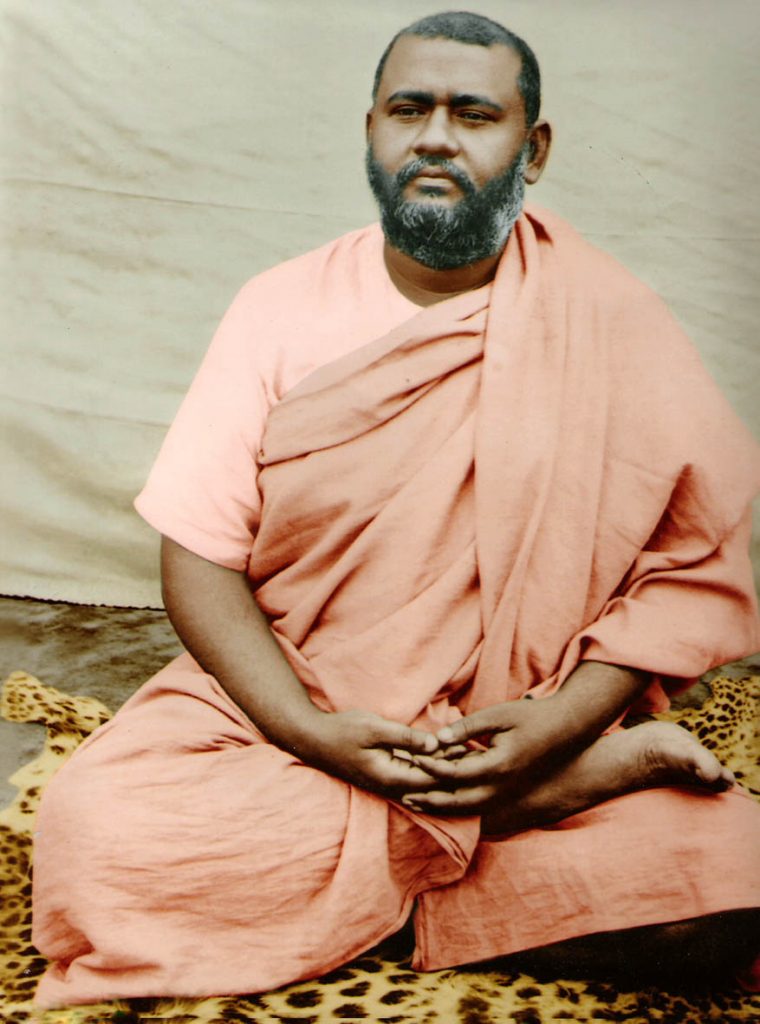
Swami Brahmananda (1863-1902) is the second most important disciple of Paramhansa Ramakrishna.
Rakhal Chandra Ghosh, the name by which Swami Brahmananda was known in his pre-monastic life, was born in an aristocratic family in a village not far from Basirhat in the district of 24 Parganas. His father Ananda Mohan Ghosh was a zamindar. His mother was a pious lady and a devotee of Sri Krishna. Perhaps it was she who gave her son the name Rakhal (meaning the boy-companion of Sri Krishna) when the latter was born on 21 January 1863. Unfortunately, the mother died when Rakhal was only five years old. Soon after, his father married a second wife who brought up Rakhal.
As a student, Rakhal was remarkable for his intelligence. But even as a boy he had varied interests in life. Physically he was much stronger than the average boy of his age. His companions found it hard to cope with him in wrestling or at play. He would take part in many village games and show unsurpassed skill in them. But play and games did not absorb the whole of his attention. Nearby was a temple dedicated to the Goddess Kali. Often enough, Rakhal would be found in the precincts of the temple. Sometimes he would play at Mother-worship along with his companions. Sometimes he would himself make a beautiful clay image of the Mother and remain absorbed in worship. Even at an early age, Rakhal had a great devotion to Gods and Goddesses. During the time of Durga Puja in the family, he would be found seated still and calm witnessing the ceremony, or at the hour of darkness, when the evening service was being performed, Rakhal would be seen standing before the Deity in great devotion.
After completing his primary education, Rakhal was sent to Calcutta in 1875 and was admitted into an English High School. In Calcutta, he came in contact with Narendranath, afterwards known as Swami Vivekananda, who was the leader of the boys of the locality. Narendra, with his dynamic spirit and inborn leadership, cast his influence over others and carried them along the path he thought right. Rakhal, meek, quiet, and soft-natured as he was, easily came under his spell, and there grew a close friendship between the two which culminated in common discipleship at Dakshineswar and bore far-reaching results.
Rakhal and Narendra practised physical exercises in a common gymnasium along with their other companions. And it was Narendra who took Rakhal to the Brahmo Samaj, where they promised not to worship any image. Rakhal’s inborn religious tendencies began to unfold themselves more definitely at this stage. He would be found brooding over the mysteries of life and death, and his mind longed for the realisation of the Eternal Verity.
Books